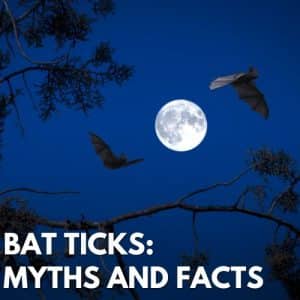
The incidence of tick-borne diseases has increased in the midwest regions of the USA. There are various ticks that are sent to the local labs in Wisconsin. In 2018 about 3,000 cases of tick-borne diseases were reported in Wisconsin. It might be due to the climatic conditions in the state. Wisconsin has a warmer and wet climate which is a very conducive environment for ticks.
Ticks in Wisconsin are highly active from May to November. Many residents have reported Lyme disease during this interval, so it is significant to reduce the spread of tick-borne diseases. This blog will cover all the types of ticks that are prominent in Wisconsin and how to prevent tick bites if you are in a tick-infested area.
Type of Ticks in Wisconsin
Wood Ticks:
Wood ticks may thrive in wooded and grassy regions. Wood ticks are the most prominent in the state of Wisconsin. They are hard ticks, meaning they have shields on their backs. The larvae and nymphs of these ticks prefer small rodents: squirrels, chipmunks, etc. as their hosts. The adult wood tick prefers sheep, elk, and deers as hosts. The adults are active during the summer months. These ticks are likely to spread diseases such as Colorado Fever, Rocky Mountain spotted fever, Anaplasmosis, and Tularemia. These ticks cannot spread Lyme disease.
Lone star ticks:
Lone star ticks are found in the wooded regions of the midwestern United States. This goes to the fact that they are prevalent in Wisconsin. They are hard-shelled ticks. The male and females are reddish browns in color. The females have white star-like dots on their backs. Like most ticks, these ticks cannot survive indoors. These ticks are found in wooded areas. They tend to prefer cattle, dogs, sheep, and lamb as hosts. They are attracted to the hosts by their warmth and the release of carbon dioxide. The larvae prefer hosts such as:
Grey foxes, cottontail rabbits, striped skunks, raccoons, cotton rats, grey squirrels, cats, and ground-nesting birds. Humans may encounter lone star ticks in all three stages of their life cycle.
That is larvae, nymphs, and adults tend to bite humans. Lone star ticks are a problem as they can transmit pathogens that cause tularemia, Heartland virus, Bourbon virus, and tick-associated rash syndrome in the South (STARI).
Deer Ticks:
Deer ticks or blacklegged ticks are likely to be encountered between early April to early August. Deer ticks are similar to dog ticks. They can be identified by their dark brown to black color. They possess black color legs.
Females have reddish-brown color on the lower part of the body, while the males have their dorsals covering full-backs. The blacklegged ticks take nearly two years to complete their lifecycle. These ticks’ conducive environment is humid climatic conditions. The deer ticks are likely to cause Lyme disease. Lyme disease can only be transmitted if the ticks bite for more than 36 to 48 hours. Apart from Lyme Disease, the deer ticks can also transmit Ehrlichiosis, Anaplasmosis, Powassan virus disease, Babesiosis, and Borrelia miyamotoi disease.
How To Prevent Tick Infections In Wisconsin?
There are specific ways recommended by the Wisconsin Department of Health and Services to prevent tick infections and tick bites. Some of the prominent ones are notified below.
- Use tick repellents on skin and clothing – You can use tick repellents like DEET (20%-30%), Lemon Eucalyptus, and Picardin (10%-20%). Avoid using lemon eucalyptus oil on children below three years of age.
- Wear appropriate clothing while going outdoors – It is good to wear long sleeves and long pants and tuck them in to prevent unnecessary tick bites. Wear light-colored clothes that will help you to identify ticks in your clothes. After your outdoor adventure, do not forget to treat your clothes with Permethrin.
- Avoid direct tick contacts – Avoid brushing against the grasses and leaf litter. If you are going for a forest adventure, keep your track on the central trails.
- Routine tick check – Have a periodical or routine tick check on your clothes, household, pets, and yourself.
Conclusion:
The tick population is rising in Wisconsin, and hence it is a priority to take necessary precautionary measures to protect yourself from tick infection and tick-borne diseases. It is best to avoid direct tick contact and use routine tick checks on your clothes, pets, and household to prevent unnecessary tick infections.



